Ear Reconstruction Surgery
The following information sheet is intended to assist patients preparing for ear reconstruction surgery for birth defects such as microtia, trauma or previous surgery with Dr Nicholas Lotz.
-
Patient Information
Fact Sheet
-
Tags
Ear Reconstruction Surgery
ear-reconstruction-surgery-icon
To create a new ear as a result of birth defects such as microtia , trauma or previous surgery, the choices are either to use tissue from the patients’ own body (autogenous reconstruction) or to use synthetic materials (alloplastic reconstruction).
Dr Lotz prefers the rib graft technique (autogenous reconstruction) to reconstruct an ear, but he also performs combined surgery with another surgeon to offer Medpor ear reconstruction (alloplastic reconstruction). During your consultation the treatment alternatives available will be discussed with you in detail.
Autogenous reconstruction
This involves making a new ear from the patients’ rib cartilage which is then placed under the skin on the side of the scalp where the ear should have been. This technique of using rib cartilage is by far the most reliable and commonly used technique amongst the world’s leading ear reconstructive surgeons, and is still considered the gold standard.
Reconstruction using rib cartilage is usually performed when the child is around the age of 10.
The main reasons to wait until this age are:
Until the child is big enough, the rib cartilage is too small and thin to produce the best results.
Until age 10 the other ear is still growing. How much the cartilage in the newly created ear will grow is unpredictable, hence it requires some guesswork as to what size to make the ear. Waiting until the child is older removes this guesswork and leads to more predictable results.
It is important that these children can understand why they are having surgery and are old enough to be co-operative with the surgery and follow up.
There are some suggestions that removing too much rib cartilage when the children are still young can interfere with the growth of the chest wall.
Autogenous (Rib Graft) Reconstruction Technique
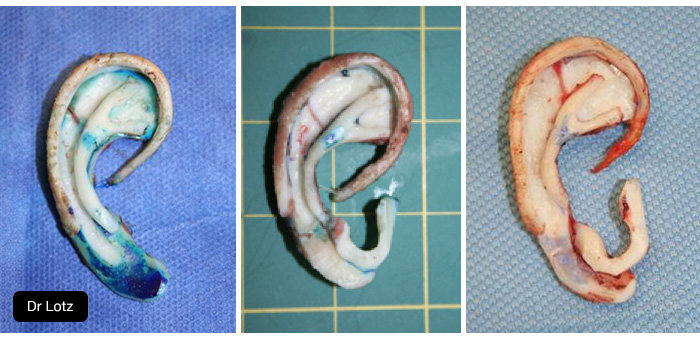
Autogenous Ear Reconstruction - ear frameworks sculpted from rib
Examples of ear frameworks sculpted from rib cartilage by Dr Lotz.
First operation
The procedure is performed under a general anaesthetic. A tracing will be made of the normal ear if there is one, and this will be used to design the framework for the reconstruction. Cartilage is harvested from the chest wall, through an incision which is around 10cm long.
The cartilage from 3 ribs is removed and carved into a framework which is designed to resemble the other ear. This framework is placed under the hairless skin where the ear is normally situated. 2 small suction drains will be placed in the ear to suck the skin into all the crevices of the ear, and these will remain in place for around 5 days. The stitches will be removed after around 1 week and bandages remain in place until then. Your child is usually in hospital for 2 nights.
At the completion of stage 1, the ear will have all the normal shapes when seen from the side, but it will be flat against the side of the head.
Second operation
The second stage of the ear reconstruction, which involves elevation of the newly created ear from the side of the head, is performed at least six months after the first operation.
During this surgery, some of the hair will need to be shaved. An incision is made around the back of the new ear, and the ear is lifted up from the side of the head. Some cartilage from the first operation, which has been stored in the chest scar, is placed under the ear to help to hold it out from the head.
The new groove behind the ear is covered with a skin graft to line the new groove with skin. A drain may be placed in the scalp, and dressings are put on. The hospital stay after the second operation is usually shorter (often only overnight), and the pain is much less.
A mould will be made to help contour the groove behind the new ear and will be left in place for several weeks.
Alloplastic Reconstruction Technique
Alloplastic ear reconstruction
Medpor is a plastic-like material (porous polyethylene) designed to allow some tissue ingrowth. It takes the place of using patients own rib cartilage to make the shape of the ear. It can come as parts welded together by the surgeon to match the other ear, but it is now also possible to perform custom 3D printed ear reconstruction using Medpor.
Advantages of using Medpor:
The advantage of using Medpor is that the surgery can be performed at a younger age, as you do not need to wait until the child is large enough to have sufficient rib cartilage to make a new ear. It is also easier to get a Medpor ear to project out from the side of the head, whereas ear reconstructions from rib cartilage tend to sit closer to the side of the head.
Disadvantages of using Medpor:
The major disadvantage of Medpor is that there is a lifetime risk that it may become exposed (protrude through the skin) and require more surgery or removal, whereas rib cartilage ears will not do this as they are part of your own body tissue.
A prosthetic ear is a plastic clip-on ear, which attaches to surgically placed studs in the bone on the side of the head. This technique is occasionally useful if for some reason it is not possible to create an ear using rib graft or Medpor.
Complementary Procedures
Prominent Ear Correction (Otoplasty)Before & After
Case Example:
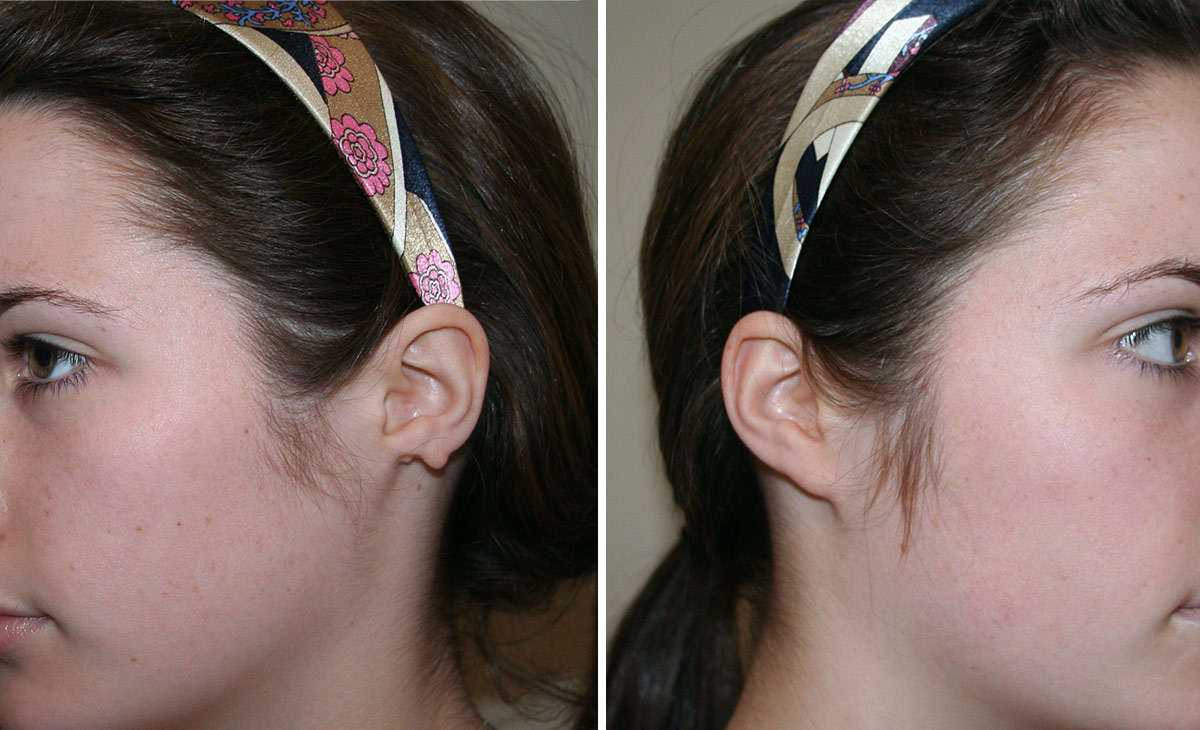
Before: Ear Reconstruction of congenital ear lobe defect - Dr Nicholas Lotz
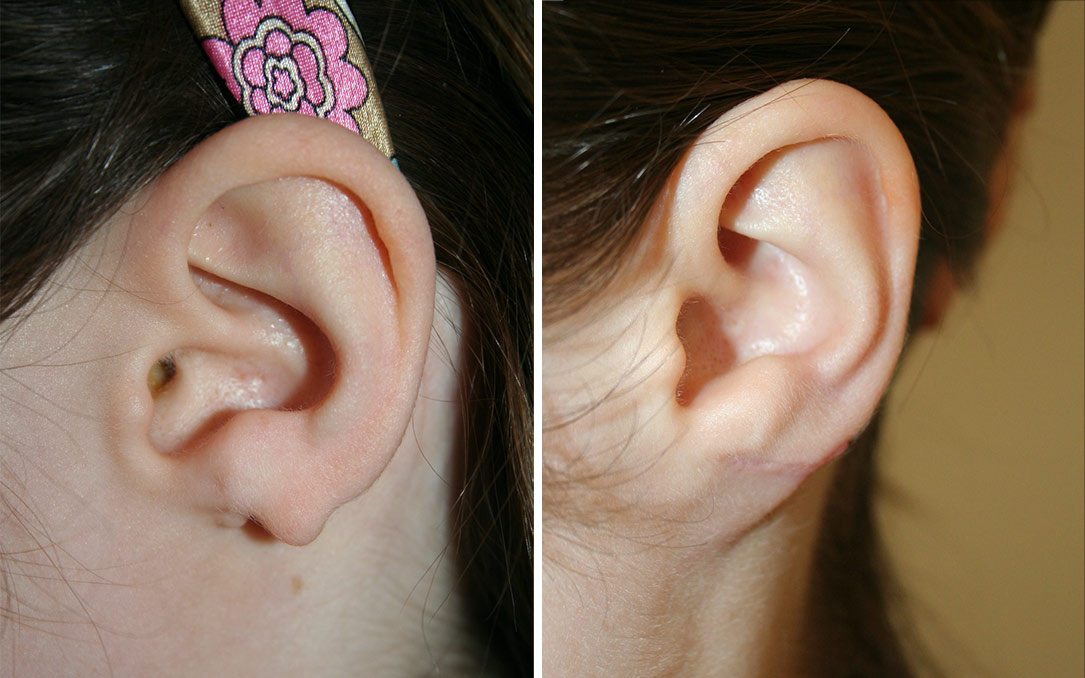
Before & After: Ear Reconstruction of congenital ear lobe defect - Dr Nicholas Lotz
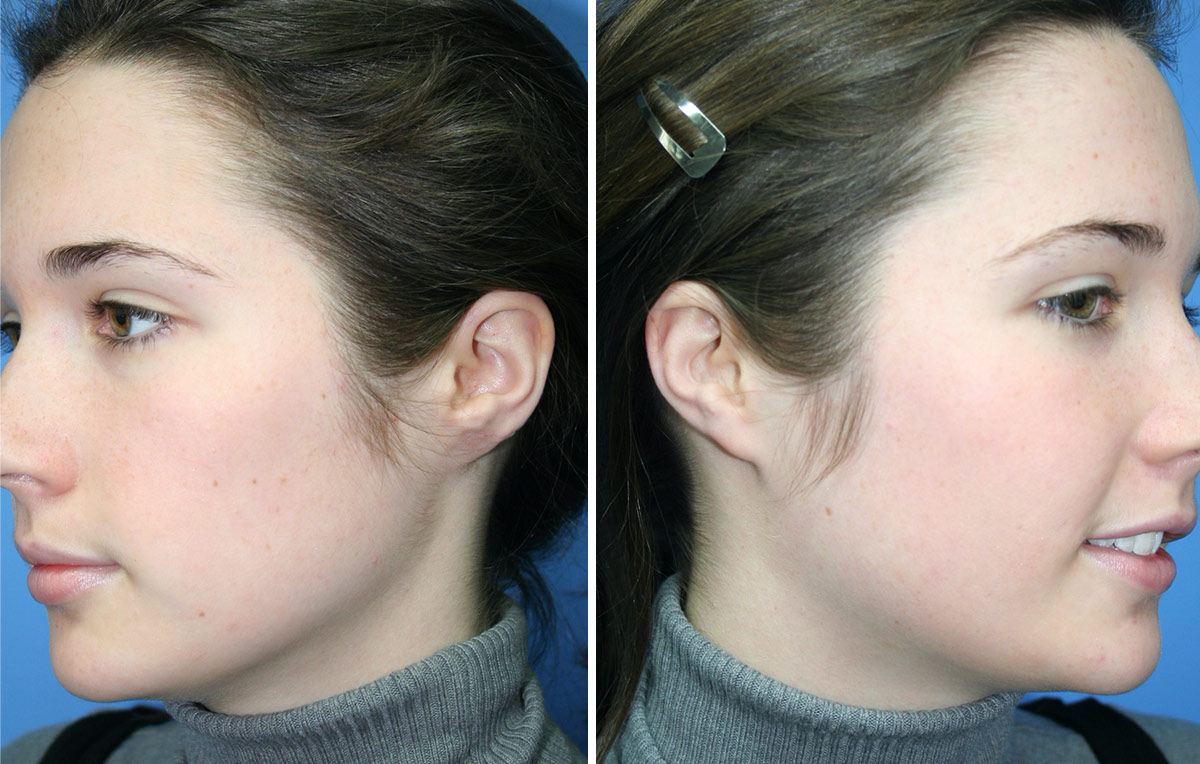
Final Result: Ear Reconstruction of congenital ear lobe defect - Dr Nicholas L
Before & After
Case Example:
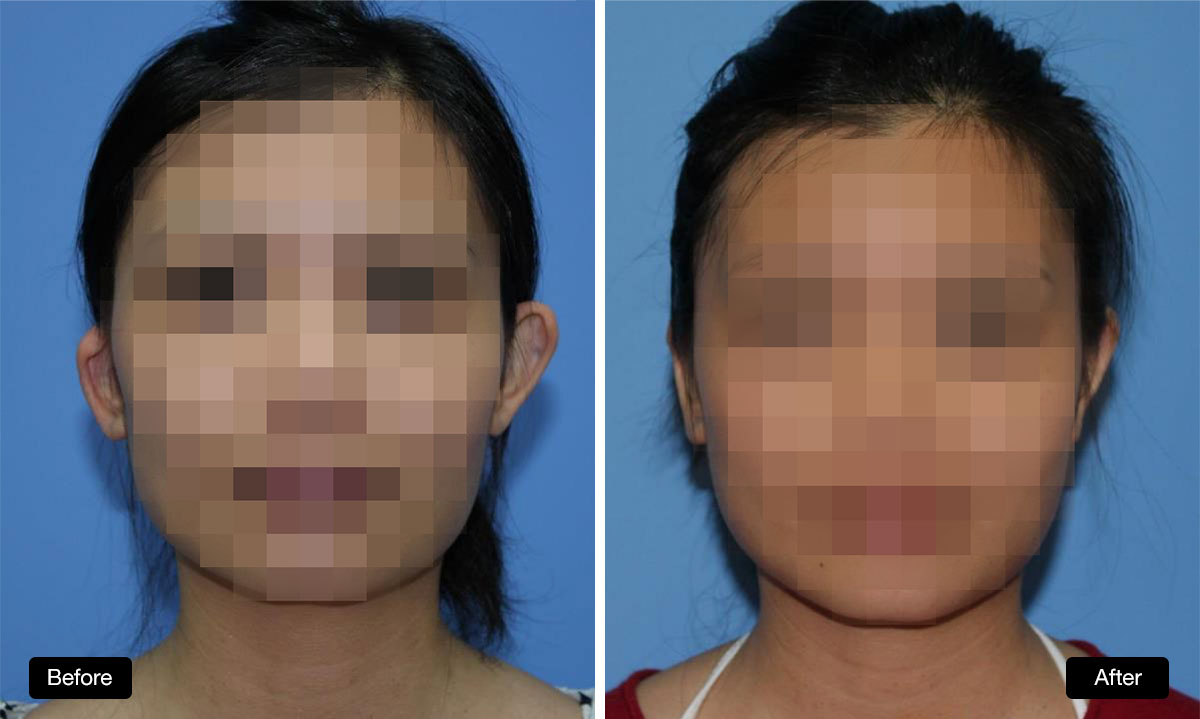
Ear Reconstruction - cartilage graft to repair small folded ear,
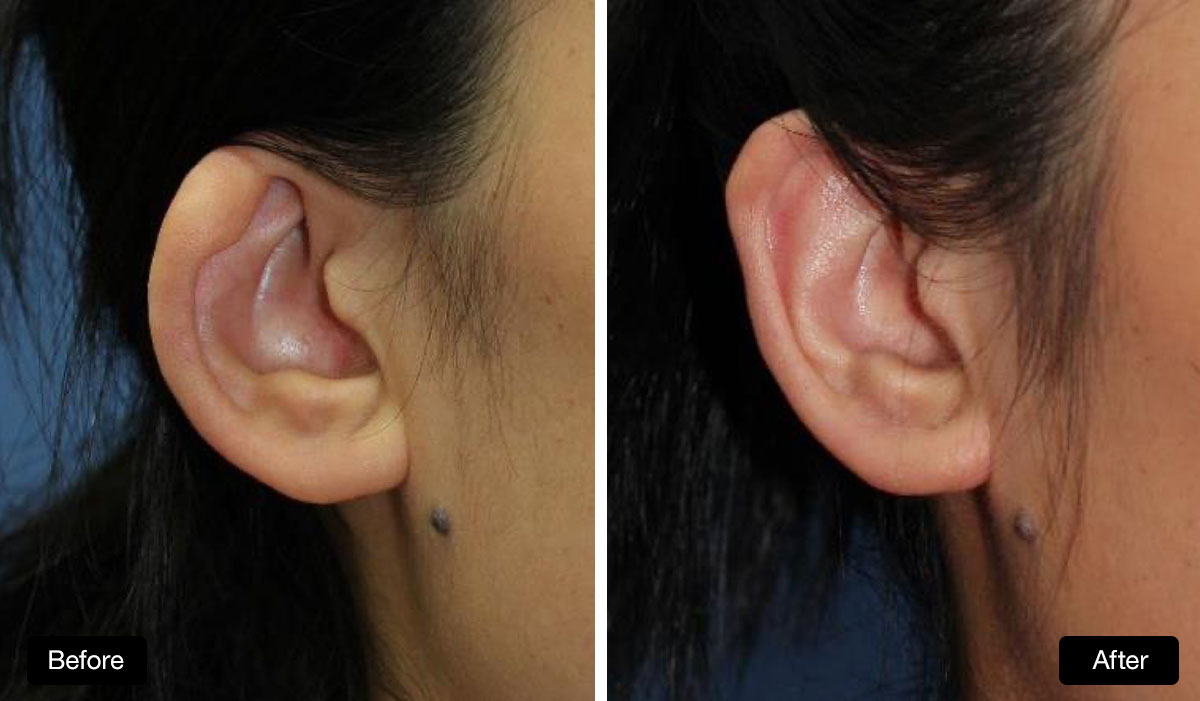
Ear Reconstruction - cartilage graft to repair small folded ear,
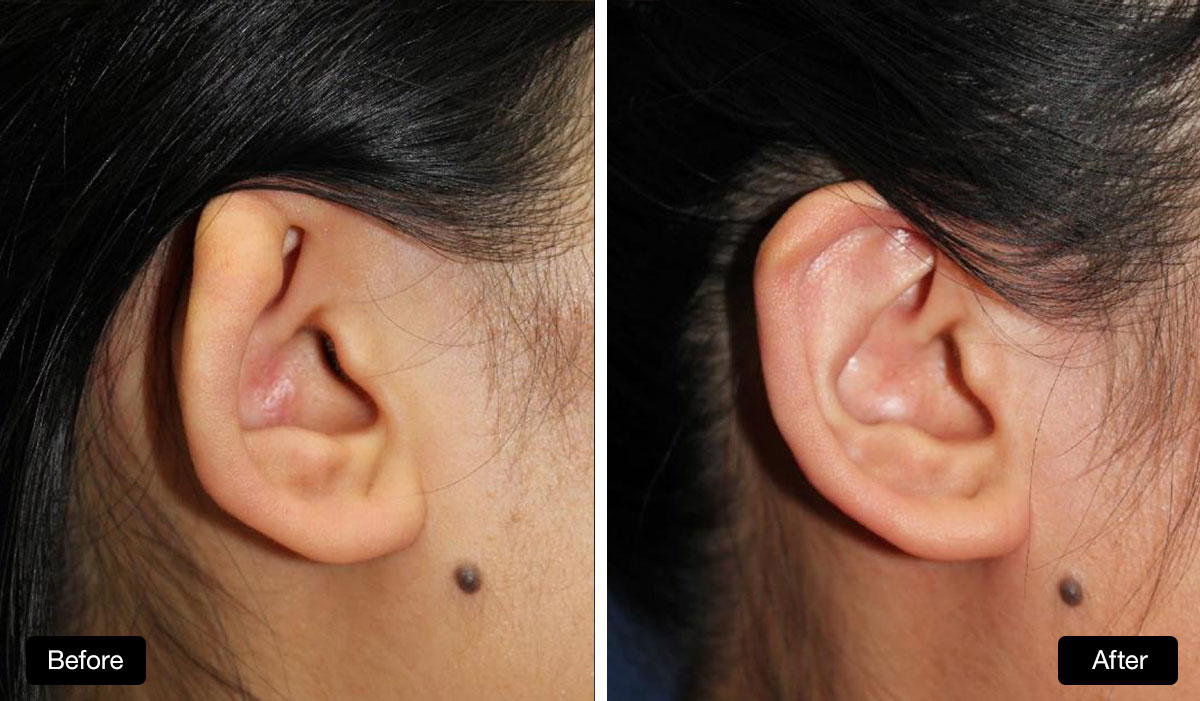
Ear Reconstruction - cartilage graft to repair small folded ear,
Before & After
Case Example:
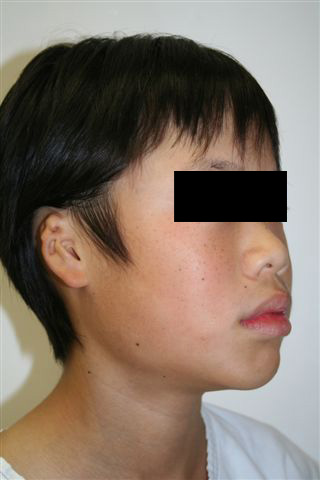
Pre-Operative: 13 year-old boy with isolated right microtia. A
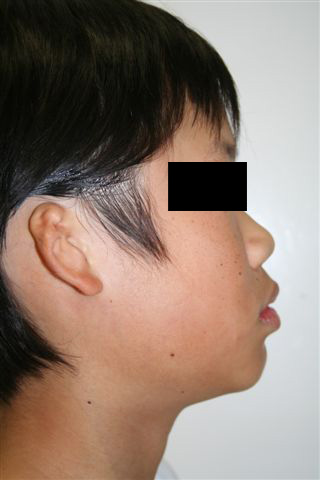
Pre-Operative: 13 year-old boy with isolated right microtia. B
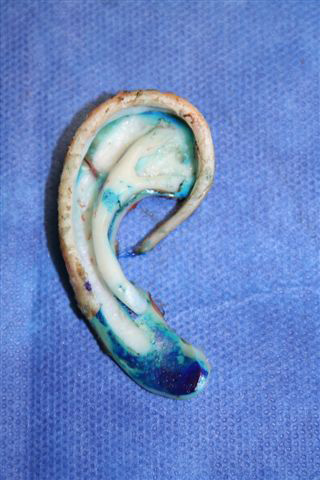
Ear framework sculpted from rib cartilage. C
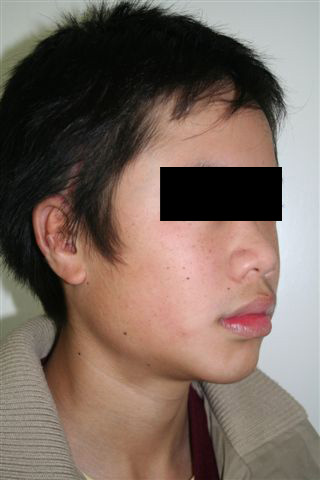
Post-Operative: Photos taken at completion of ear reconstruction surgery. D
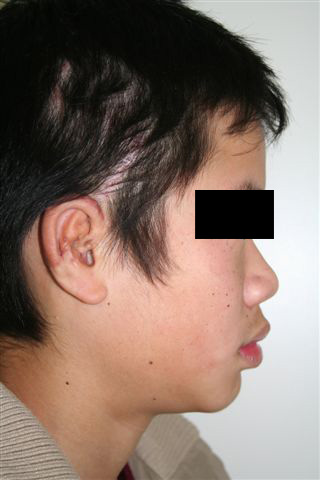
Post-Operative: Photos taken at completion of ear reconstruction surgery. D
Before & After
Case Example:
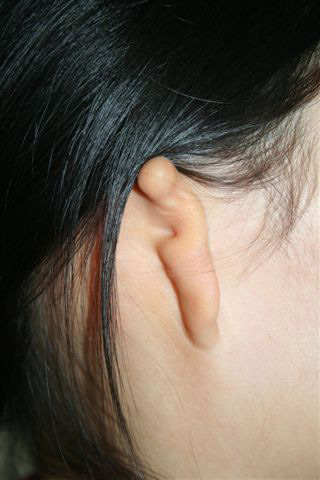
1A - 12 year old female with isolated right microtia. Before
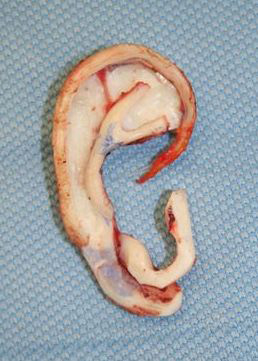
1B - Ear framework sculpted from rib cartilage
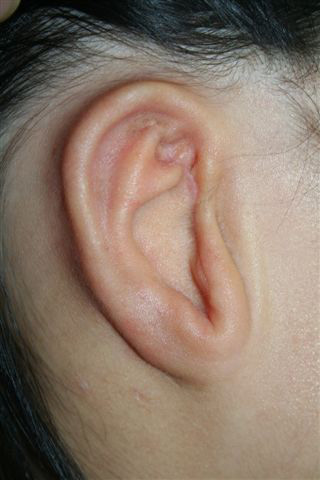
1C - After first stage of ear reconstruction for microtia
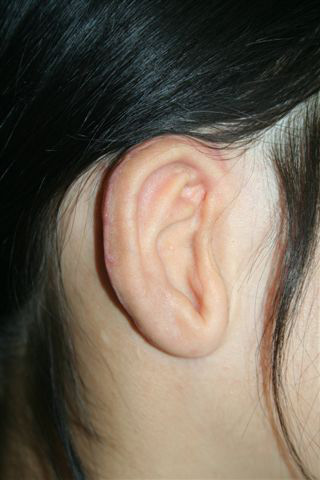
1D - After elevation of ear (second stage of ear reconstruction for microtia)
Frequently Asked Questions
ear-reconstruction-surgery-icon
Why is it important to splint the ears early in children?
The infants’ ear cartilage is softest early on, so starting earlier not only means more effective results, but a shorter period of ear splinting is required.
How long will my child need to have their ear splinted?
This chart shows how long to splint the ears for:
Age Mould Fitted
Duration of Splinting
Birth
2 weeks
4 weeks
4 weeks
2 months
2 months
3 months
3 months
6 months
4 months
over 1 year
6 months
The splint should be worn for 24 hours a day.
Can I take the splints off?
The splints are best worn 24 hours a day; they are made to be comfy, and your baby should be able to sleep on a splinted ear. However, you can remove them for a few hours for a special occasion, or when swimming.
If you do take the splints off, make sure you refit as soon as possible, as you can quickly lose the benefit of the correction, particularly early in the splintage.
Does breastfeeding affect splintage duration?
Breastfeeding keeps the cartilage softer for longer. If Mum is breastfeeding, about 25% more splintage time may be required as the cartilage is slower to harden. After two months of age, ear splintage times may be 10% shorter than stated above if Mum is breastfeeding because the cartilage will be slightly softer and more mouldable. This is not a reason to delay beginning ear splintage however, as the sooner you begin, the greater the likelihood of a good result.
How will I know when to take the splints off my child's ears?
Dr Lotz will advise you how long to continue the splints for, in accordance with the chart above. If you remove the splint and the shape remains unchanged for 48 hours then you no longer need the splints. If the shape starts to slowly change then they should be reapplied.
What do I do if my child is too old for ear splinting?
Dr Lotz can advise you on surgical options, including an otoplasty to surgically reshape the ear and make it sit closer to the side of the head.
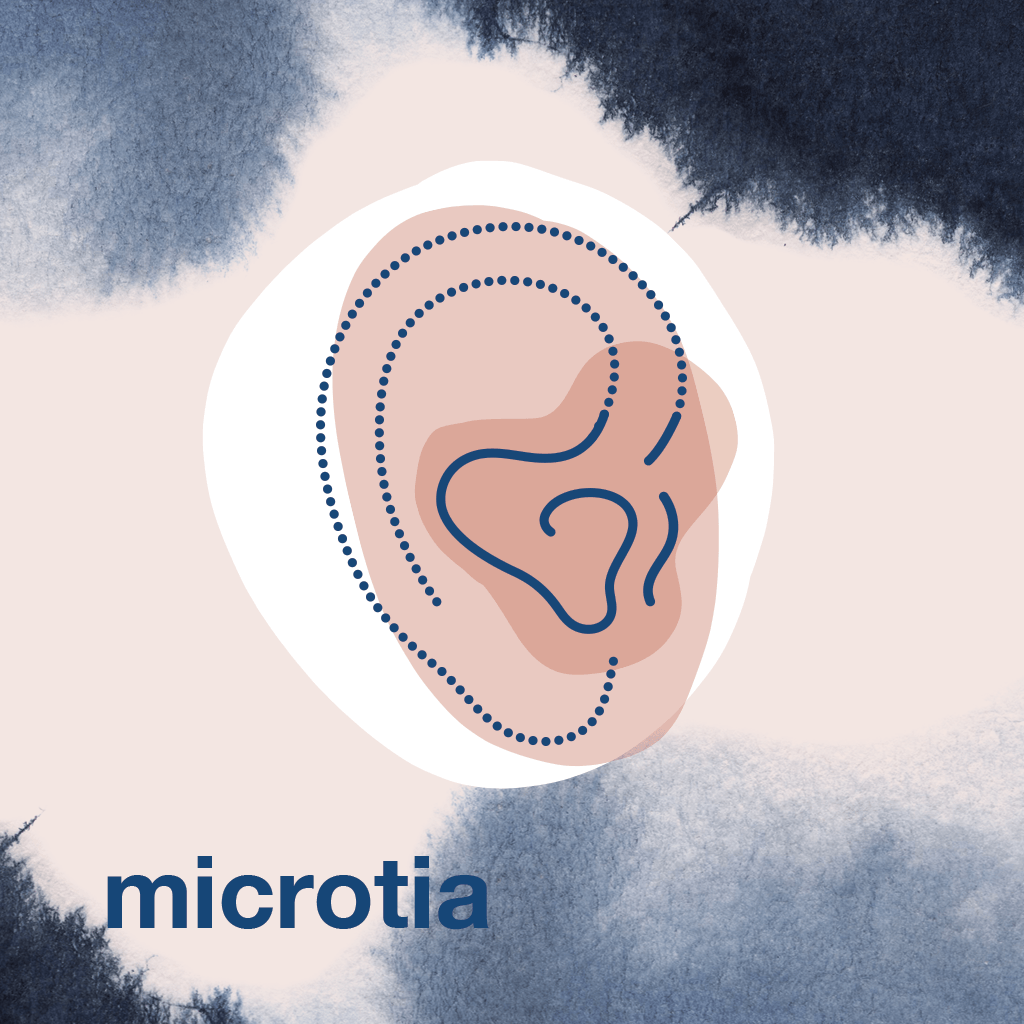
microtia-plastic-surgery-procedures-1024-sm-2
Related Factsheets
Ear Reconstruction Surgery
The following information sheet is intended to assist patients preparing for ear reconstruction surgery for birth defects such as microtia, trauma or previous surgery with…
Minor Ear Deformities
The following information sheet is intended as a resource providing an overview of minor ear deformities including cryptotia, lop ear and/or a small ear-lobe,…
About Microtia
The following information sheet is intended as a resource for parents who may be preparing for their child to undergo ear reconstruction surgery for…
Hearing in Microtia
The following information sheet is intended as a resource for parents who may be preparing for their child to undergo ear reconstruction surgery for…





